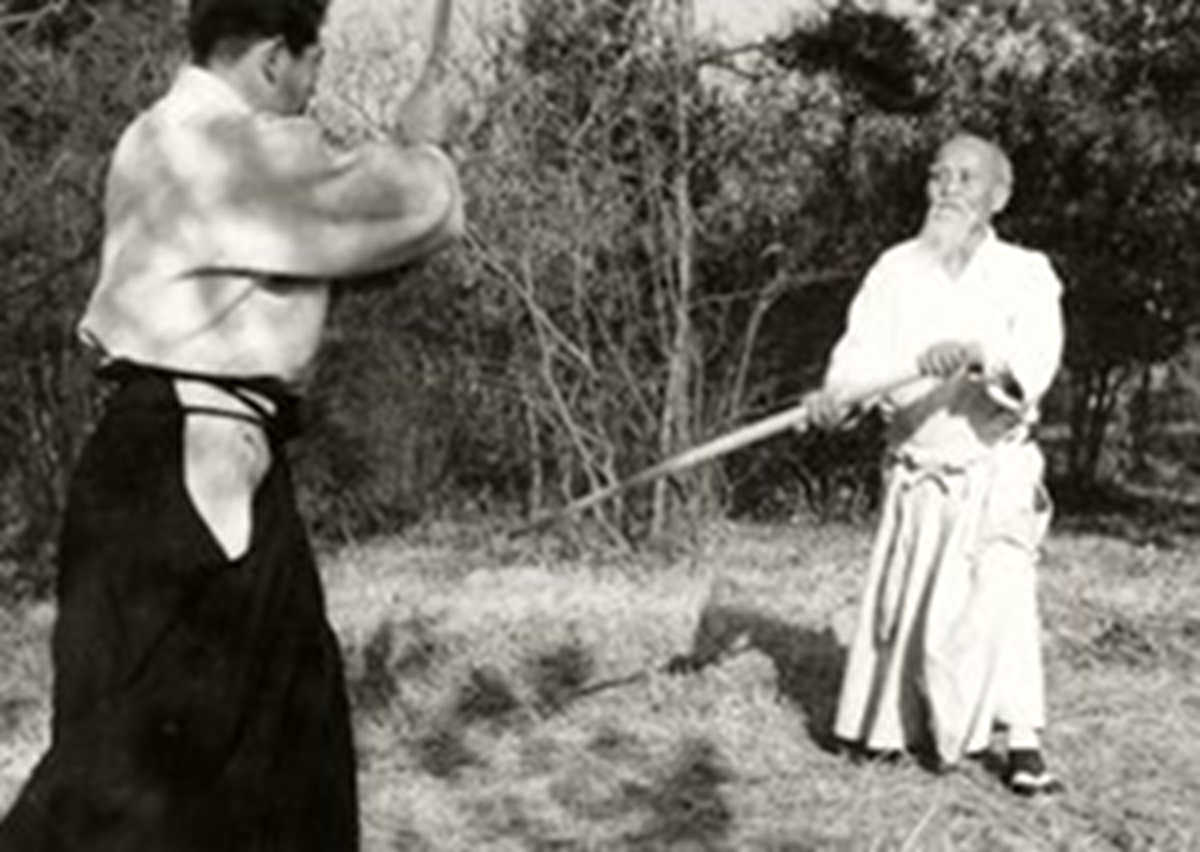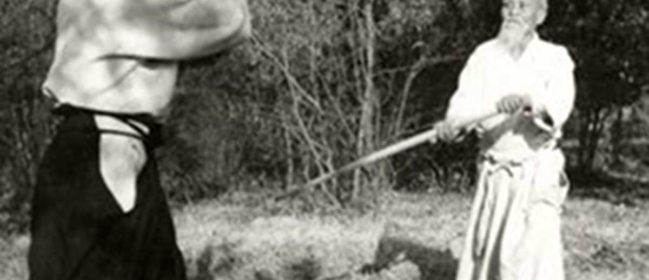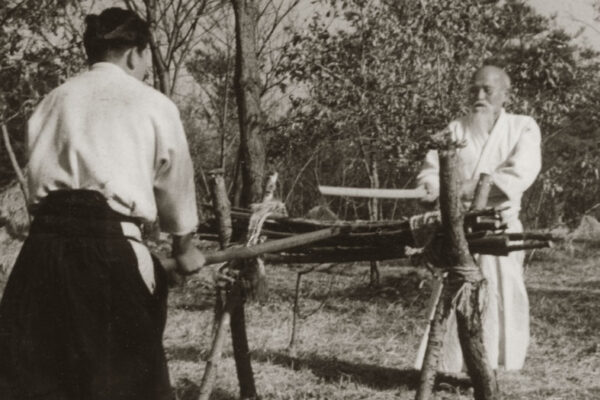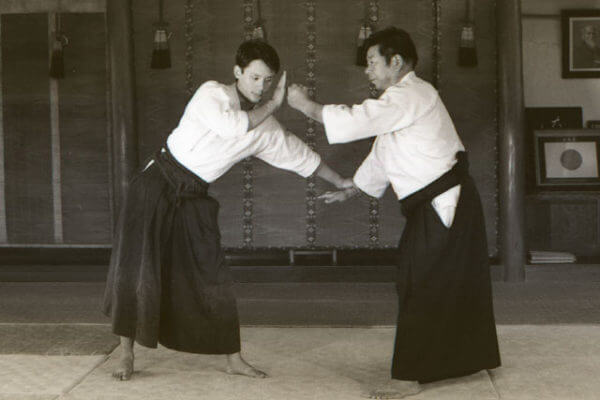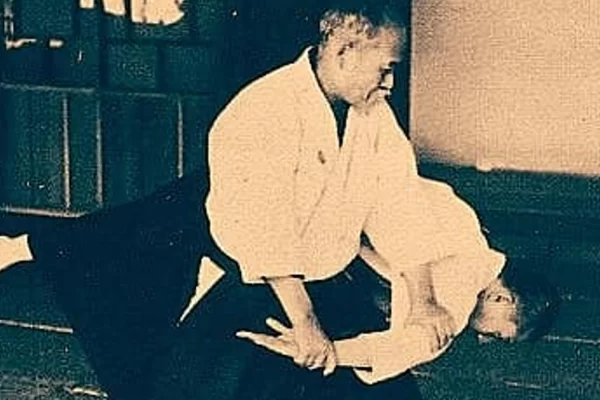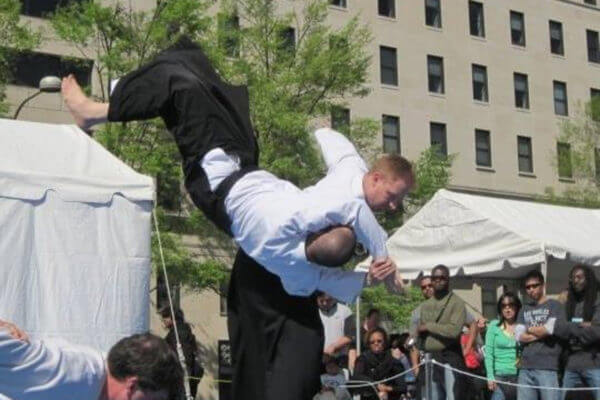Introduction
This post discusses the concept of “affiliation” in the context of an Aikido dojo. Affiliation, in this case, describes the relationship that a dojo has with a greater parent organization. This post talks about the importance of affiliation to both the dojo and individual students. While affiliation isn’t the only factor that should be considered when choosing an Aikido dojo, in my opinion, it is one of several factors that should be considered.
What is “Affiliation”?
Many Aikido dojos are affiliated with some kind of “organization” or affiliation of dojos. Among other benefits, affiliation provides a conduit to a larger organization. In most cases the larger organization is the Aikikai Foundation, although there are some well-known, and historically relevant, exceptions.
For an Aikido dojo, affiliation with a parent organization, can be a controversial subject. I recall having a conversation with my first Sensei, George Simcox, about affiliation. When I began my Aikido studies, I didn’t really understand how the Aikido community could have fractured into so many different sub-families, especially given that we’re all practicing the “Art of Peace”. The behavior of both organizations, and personalities within organizations, didn’t seem consistent with the spirit in which we’re all told we should be practicing Aikido.
During the conversation with Simcox Sensei, he made a couple of really interesting points that have stuck with me for the last 20+ years. The first was that conflict isn’t a bad thing. Conflict is the “glue” that holds the Universe together. Without conflict, life cannot exist. He then went on to assert that Aikido is like any other biological system, and that an organization splitting is, in many ways, a natural progression, not unlike cellular mitosis. Over the years, I’ve come to realize that George, as he often was, was right.
What about the Larger Independent Organizations?
For the first five years of my Aikido career, I was part of the Ki No Kenkyukai (aka “The Ki Society”), an organization that famously split from the Aikikai in 1971. The history of the split is well documented. The reasons are best summarized as technical differences of opinion between Koichi Tohei Sensei and Kisshomaru Ueshiba (O-Sensei’s son, and the 2nd Doshu). It’s important to note that Koichi Tohei Sensei, at the time of the split, held the rank of 10th Dan, and was the Hombu Dojo Chief Instructor. The split was a painful rift for the larger Aikido community, but I don’t know anyone that would question Koichi Tohei’s lineage or his technical abilities.
While it may sound as if I’m making an argument in support of being unaffiliated, this can’t be farther from the truth. While I do agree with Simcox Sensei both about large organizations following a biological model and about the nature of conflict, if we look at Tohei Sensei’s situation (and that of select others), Tohei Sensei was a high ranking instructor with both a very clear purpose and a teaching style that differed from that of the 2nd Doshu. Tohei Sensei was always honest about what he taught, and about his differences with the Aikikai. I would consider organizations like the Ki No Kenkyukai, or Hitohira Saito Sensei’s organization, the Shin Shin Aiki Shuren Kai, to be legitimate organizations in their own right.
There are circumstances where a kyu-ranked student moves to an area where there may not be an Aikido dojo, and he/she forms a dojo to continue practice. The club throws some mats down in a space, and eventually seeks affiliation with a parent organization. I know of several very well known dojos that started this way. This is much different from the situation where someone forms an organization with the intent of remaining unaffiliated, and then begins creating rank out of thin air. This can sometimes include self-promotion. Some unaffiliated dojos also claim to be remotely affiliated with long defunct, or even non-existent, dojos and individuals.
Our Affiliation
Our dojo is fortunate to have the support of our teachers and the greater support of the California Aikido Association (CAA). We are affiliated with the Aikikai Foundation via the CAA. The CAA is one of 14 US based organizations recognized by the Aikikai. Our dojo is a a member of CAA Division 1, under Patricia Hendricks Shihan. We practice Iwama style Aikido, a style of Aikido codified by Morihiro Saito Shihan. Our dojo’s principal goal is to do our best to help preserve the Aikido that Saito Sensei studied directly from O-Sensei for 23 years.
Why is Affiliation Important?
Affiliation and lineage are closely intertwined. It has been my experience that in the best case unaffiliated dojos lack instructional coherence. They don’t receive any clear technical guidance from a parent organization. Additionally, members of unaffiliated dojos often have some difficulty being regarded as “inside students” by the greater Aikido community. These dojos tend to stand alone from an instructional standpoint. Aikido can’t be learned by reading, or by watching YouTube videos. No martial art can be learned this way. Seminar attendance, while very important, is not a substitute for long term training under a qualified instructor.
Rank
When a student earns Yudansha (Black Belt) rank at an Aikikai affiliated dojo, as an example, their rank is registered at Hombu Dojo. Their rank is recognized globally. Passports (“Yudansha Books”) are issued to Aikikai Yudansha. Rank granted by unaffiliated dojos is, in general, not portable to other dojos. A kyu ranked student transferring from an unaffiliated dojo will usually be evaluated over their first few months. Depending on rank, they may be asked to re-test. I’ve never personally seen anyone above the rank of 3rd kyu transfer their rank successfully from a non-Aikikai school. I was 3rd Kyu “transfer student” from the Ki Society. I had to work hard to qualify to test for 2nd Kyu at an Aikikai affiliated Iwama dojo. I’m personally not aware of any process for transfer of Yudansha (Black Belt) rank from an unaffiliated dojo to an Aikikai affiliated dojo. I do know of several instances where people have had to re-test, with associated time in rank, for Yudansha rank.
Upstream Support
In addition to both curriculum and testing guidance, affiliation with a larger organization provides training opportunities for senior students, including the dojo-cho. Yudansha tests are often officiated by the organization head, ensuring that test requirements are uniformly applied. This helps establish a “structure” for students earning rank. There is a widely known rule of thumb that a Dojo-cho should only officiate tests up to two rank levels below his/her own rank. As an example, someone holding a 3rd Dan, should not be testing anyone above 1st Dan. This is actually codified as a rule in our organization’s bylaws. Having upstream support is important to a dojo for many reasons. It’s difficult to see how students can continue to grow and prosper without affiliation. This includes people who are teaching Aikido regularly.
How Can I Determine a Dojo’s Affiliation?
This is a pretty easy thing to do these days. The easiest thing to do is ask the Dojo-cho, or Chief Instructor, of a school you’re interested in! If you’re visiting prospective dojos, it’s perfectly acceptable to ask about the dojo’s affiliation. Another good question to ask, especially if you ever expect to have to move to a new location, is whether or not earned rank will transfer to another dojo. A Dojo-cho is normally thrilled to get questions like this! You can also search online. Visit the prospective dojo’s web page. Most Aikido dojos have a web presence. A dojo’s affiliation is usually advertised prominently. Some red-flags to be concerned about when choosing a dojo, relative to affiliation:
- There doesn’t appear to be any affiliation at all…
- There is no evidence of outside interaction with other dojos. The dojo seems to exist in a vacuum. Worse… outside interaction with other dojos is actively discouraged. This is a rare circumstance for an Aikido dojo. Aikido dojos tend to form communities.
- You are told that rank doesn’t transfer. You may also be told that this isn’t a big deal. For low kyu-ranked students, this tends not to matter as much. As you approach Shodan (1st degree black belt), this becomes an issue.
- There is a negative reaction to asking about affiliation.
It’s important to point out that affiliation with a parent organization isn’t the sole determining factor in choosing a dojo. I know of several very good dojos that choose to remain unaffiliated with a parent organization. These dojos, however, are almost all run by individuals with very high rank (6-8th Dan) earned from a legitimate organization. When looking for a dojo, it’s important to consider the whole picture.
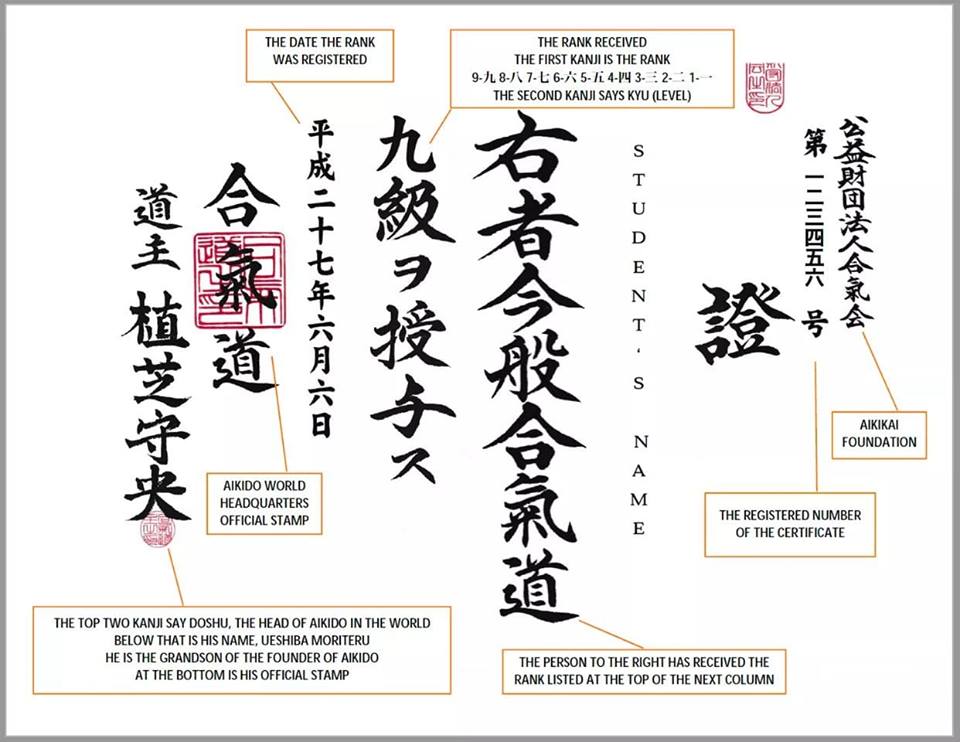
Aikikai Affiliation
If a dojo claims affiliation with the Aikikai, then the Yudansha (black belt rank students) will have an Aikikai Passport (aka “Yudansha Book”) and their Dan Certificates will be issued by the Aikikai Foundation. Any Yudansha rank issued by the dojo will be issued by the Aikikai. Shown to the left is an example Aikikai Yudansha Rank Certificate with the significant elements highlighted. If you don’t see a certificate like this hanging on the wall of a prospective dojo, then they may not be Aikikai affiliated. This isn’t necessarily a bad thing, but if you are a prospective student, this should be a factor in your decision making process.
Other Organizations
It’s very important to note that there are several reputable organizations outside of the Aikikai. Each of them has a significant web presence. A good example is the “Shin Shin Aiki Shuren Kai“. This is the organization founded by Hitohira Saito Kaicho, the son of Morihiro Saito Shihan. A second good example is the Ki No Kenkyukai, or Ki Society. Both of these organizations, for various reasons, separated from the Aikikai. Both organizations were founded by very senior Aikidoka with solid teaching credentials. As discussed earlier, these organizations represent examples of very well respected Aikidoka separating from the Aikikai to follow their own path. Their reasons for separating from the Aikikai are well understood.
Training and Affiliation
If a dojo claims to be “independent”, or “unaffiliated”, it’s important to consider this when establishing your personal training goals. Do you care if your rank will transfer to another dojo/organization? Do you care about the source of your instructor’s background? Does your Sensei have a relationship with their Sensei, or are they teaching in a “technical vacuum”? Search the Internet for your prospective dojo’s affiliation. It’s almost impossible, these days, for an operating Aikido dojo, or Aikido organization, not to have a significant web presence. Is your Sensei continuing to invest time and energy into his/her personal training? Even a high ranking instructor (e.g. 6th/7th Dan) continues to learn for a lifetime. I am not implying that all unaffiliated dojos are run by unskilled, or even unscrupulous, individuals. I do think, however, that it’s important to learn from a qualified instructor. Affiliation is a strong indicator of qualification. In any case, if your only option is an unaffiliated dojo, or after appropriate due diligence, you’ve decided that an unaffiliated dojo is where you belong, then you’ve made an informed decision and this is really the overarching goal of this post!
I cannot stress enough that you can’t learn Aikido from YouTube, or by attending a few annual seminars as an “outside” student. You can’t learn Aikido from books. Attending an occasional seminar doesn’t place the person teaching the seminar in your lineage. However, if you are happy training somewhere, and you feel that a specific dojo is meeting your needs, then this too is an important factor in choosing a dojo.
Conclusion
Although some will undoubtedly choose to read this post as criticism, this post isn’t intended to be critical of any particular dojo or style of Aikido. Students and visitors often ask about both our affiliation and lineage. I’ve also had several discussions, over the last year, about the importance of these concepts. The answers are generally complex and when taken out of context can sometimes misrepresent intent. In the end, if a student enjoys what he/she is doing, and feels like the dojo they’ve chosen is meeting their training goals, then this is certainly an important consideration.
For readers working toward Yudansha rank. I currently hold the rank of Nidan. Both my Shodan and Nidan tests were officiated by a group of senior instructors (5th-7th Dan). I’ve logged close to 6,000 hrs of mat time, over 24 years, to get to this point. This is a pretty conservative estimate. I’m not counting seminars, long term training outside of my home dojo, or teaching time. Assuming about 32 hrs of training per month at 70.00/month, this comes to over $20,000 invested in training. This doesn’t include seminar fees, travel costs, the cost of uniforms and weapons, or the opportunity cost of my time. Just monthly dues alone.
In my case, I wasn’t really concerned about rank until I found myself responsible for a dojo. Whether you are concerned about rank, or not, dedicated Aikido practice represents an investment of time and financial resources. Bear in mind that circumstances sometimes change, as they did for me, and that rank may become important later! If you’re a dedicated student, both you and your teachers are putting in a good deal of effort. You’ve made a choice to study Aikido. Make sure that you do your homework when choosing a training venue that will support your training goals.
In an attempt to avoid sounding like I’m “dissing” other dojos, it’s important to point out that I’m a huge advocate of prospective students visiting every Aikido dojo within convenient driving distance. I volunteer names and contact information to anyone that asks, and recommend that students go visit other dojos. Some of my students give me a hard time for my poor “salesmanship” skills. I feel strongly about being honest with students about what they are being taught. I think it’s important that students do appropriate due diligence when researching and selecting a dojo. I’m happy to help a student with looking for a dojo that works for them, even if it means losing the occasional student to another dojo!
I also realize that our style of Aikido may not appeal to everyone! Different teaching styles also appeal to different people. Dojos support widely varying training goals. We aren’t teaching Aikido to make a profit. We’re not a business. We’re a dojo. If some aspect of our dojo doesn’t appeal to a given student, I’d rather support a prospective student studying Aikido somewhere else, than not at all. On the other hand, we have spent decades building our lineage and affiliation. We have a clearly defined mission and training goals. We view these aspects of OUR dojo as strong discriminators. The purpose of this post is to make sure that students, both new and experienced, are objectively educated about both the concept of affiliation and the associated advantages of studying Aikido at a dojo that is affiliated with a larger Aikido family.
Related Articles
Form in Aikido
Over the years I’ve heard the statement made that Aikido is “without form”. I believe that this is a result of both misinterpretation of O-Sensei’s views and misunderstanding of Aikido pedagogy. My views are distinctly influenced by my Iwama Style background, but I think O-Sensei left quite a bit of evidence behind indicating that while HIS Aikido was without form, the path to getting to “Aikido without form” is not devoid of intense focus on form.
Zanshin (Remaining Mind) – Cultivating a Budo Mindset (Part 2)
This is the first installment in a five post series discussing the role of “mindset” in serious Budo training. This post discusses “Zanshin”, or “Remaining Mind”.
Shoshin (Beginner’s Mind) – Cultivating a Budo Mindset (Part 1)
This is the first installment in a five post series discussing the role of “mindset” in serious Budo training. This post discusses “Shoshin”, or “Beginner’s Mind”.
Our 4th Anniversary!
Our Dojo is Celebrating it’s 4th Anniversary! We consider ourselves lucky to be part of a large and vibrant global community of Aikidoka. We’re looking forward to continuing to build a strong Aikido community along the Front Range.
In-Person Aikido Practice… Gettin’ Back To It…
We’re planning on re-opening the Dojo for in-person Aikido practice on Monday April 26th 2021. We’re finally seeing what appears to be a light at the end of the tunnel with respect to the COVID-19 pandemic. This has certainly been a challenging year for everyone. We’ve mostly been supporting online classes for the last 8-10…
Aikido is a Martial Art…
There are some commonly held, and evolving, misconceptions about Aikido, some of which are held by Aikido practitioners. The Aikido of Morihei Ueshiba O-Sensei is a martial art. It’s not a “health system” or a form of “dance”. This post discusses these misconceptions.
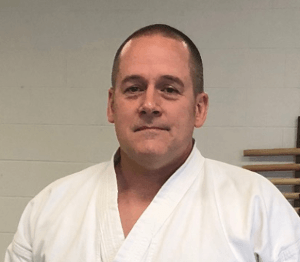
John Wiley
Dojo-cho/Chief Instructor
Traditional Aikido of Colorado Springs
Wiley Sensei (Sandan – Aikikai) started his Aikido career in the mid-1990s. Since early 2000, he’s been exclusively studying Iwama Aikido. He and his wife, Elizabeth, opened Traditional Aikido of Colorado Springs in early May 2018.
